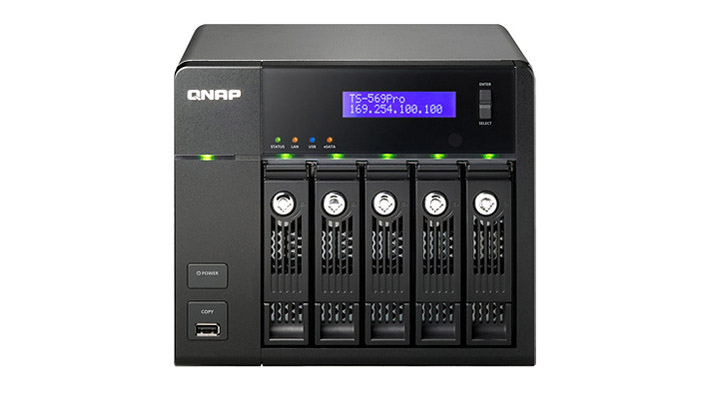You can reset your MacBook Pro. As a matter of fact, you should. If you want to sell or give it to someone, you should reset it back to factory default. That way, all your personal data, photos, and videos aren’t exposed. It’s also a good idea to reset your MacBook Pro if it’s slowing down a bit.
If your MacBook Pro is performing very slowly or you want to sell it or give it to someone else, you may want to reset it to factory conditions.
In plain English this means restoring your MacBook Pro to how it worked when you took it out of the box.
(Via: https://www.techradar.com/how-to/how-to-reset-a-macbook-pro)
Here are the steps to reset your MacBook Pro. You’d be surprised how easy it is to do. Before you actually start to reset your MacBooK Pro, you have to be crystal clear with the reason why you’re doing it. Are you giving the unit away? If you are, the first thing you would have to do is to unlink your MacBook Pro from your Apple ID.

Here’s how you can do it.
If you want to give your MacBook Pro away, you’ll need to unlink it from your Apple ID, otherwise the new owner may have trouble signing in via iCloud. The easiest way to do this is to boot up your MacBook Pro, open System Preferences > iCloud and choose to ‘Sign Out’. You can safely choose to erase local copies iCloud data on your Mac, as they’re backed up to Apple’s servers.
Alternatively, open any web browser, visit the iCloud website and sign in with your Apple ID. Select ‘Find my iPhone’. Your MacBook Pro will be listed under ‘All Devices ‘.
Select your MacBook Pro and click ‘Remove from Account’. Make sure to repeat these steps for each person who’s signed into your MacBook with their Apple ID.
(Via: https://www.techradar.com/how-to/how-to-reset-a-macbook-pro)
Whether you’re selling your MacBook or not, you should back up all your data. This way, your data is preserved and safe.
Although you may want to reset your MacBook Pro to its default settings, you might have data like documents, photos and videos that you want to keep.
If you keep backups via Time Machine, insert your chosen drive into your MacBook Pro, click the Time Machine icon at the top of your screen and choose ‘Back up Now’.
Connect the drive to your device. The Mac Operating System will ask if you wish to use this drive for backup purposes.
Click to confirm and the backup process will begin automatically; this can take several hours. You can buy drives specifically formatted for macOS on the Apple online store but any external hard drive will do, as Time Machine will automatically format it to be Mac Compatible.
This process erases any data already on the drive, so make sure to use a new or blank one.
(Via: https://www.techradar.com/how-to/how-to-reset-a-macbook-pro)
Once all your data have been backed up, you can erase or delete them from your hard drive. Follow the instructions below to erase all your data from your hard drive.
Once Time Machine has finished backing up your files, safely disconnect your drive by opening Finder, then click the eject symbol next to the drive name.
Put the backup drive in a safe place, then shut down your MacBook Pro. Once your device is fully shut down, make sure the power adapter is connected then hold down the keys Cmd + Alt + R before restarting your MacBook Pro.
If all goes well you’ll see the words ‘Starting Internet Recovery’ on your screen along with the image of a spinning globe. Release the keys and wait for Internet Recovery to finish loading. If you don’t see a small progress bar on screen, click the name of your wireless network and enter your password. This allows your MacBook Pro to download the tools it needs.
Once the Recovery Area has been loaded, click ‘Disk Utility’ then ‘Continue’. Your MacBook Pro’s hard drive will be displayed in the white box on the left hand side – it's default name is ‘Macintosh HD’.
Click to highlight this drive in blue, then choose the ‘Erase’ button. Double check that the ‘Format’ is set to macOS Extended (Journaled), then click the ‘Erase’ button.
(Via: https://www.techradar.com/how-to/how-to-reset-a-macbook-pro)
The next step for you to do is to reinstall macOS. To do this, you would really have to be crystal clear with the reason why you’re resetting your MacBooK Pro. If you’re giving it away, you won’t be getting an updated version of the operating system. Since you’ve already unlinked your Apple ID, you can only use the Internet Recovery Tools to reinstall macOS.
Once your hard drive has been fully erased, click the words ‘Disk Utility’ at the top left-hand corner of the screen, then choose ‘Quit’. This will take you back to the main page of the Internet Recovery area.
Click the Wi-Fi symbol at the top right of the screen and make sure there’s a black tick next to the name of your own wireless network. If not, click the network name to connect.
Once you’ve done this, click the second option in the center of the screen marked ‘Reinstall macOS’ or ‘Reinstall OS X’, then click continue. This will begin the reinstall wizard. Note that this will usually be the operating system which originally came with your MacBook Pro, not necessarily the most recent version of macOS.
This is because you’re using the Internet Recovery Tools. If you use the standard Mac Recovery area to reinstall macOS, the operating system will be linked to your Apple ID, meaning your password would be required for every software update.
The Internet Recovery tools don’t require this, which is very useful if you’re giving your MacBook Pro to someone else. If they want the latest version of macOS, persuade them to sign in to the App Store and download it using their own Apple ID, once reinstall is complete.
Click ‘Continue’ to proceed, then ‘Agree’ to the Terms and Conditions. The install wizard will now ask you to choose the destination drive. Click the one your erased in the previous step (e.g. ‘Macintosh HD’ )then on ‘Install’.
Reinstall time will vary depending on your connection speed. Keep your MacBook Pro connected to mains power with the lid open whilst this is taking place.
(Via: https://www.techradar.com/how-to/how-to-reset-a-macbook-pro)
Finally, it’s time to launch Setup Assistant. If you’re giving or selling your MacBook to someone, you don’t have to do this part. If you’re keeping your MacBook Pro, read on.
Once the Mac operating system has been successfully reinstalled, your MacBook Pro will launch Setup Assistant. This is the install wizard you went through when you first purchased your device.
If you plan to sell or give away your MacBook Pro, you can now shut down the device. The new owner can then restart Setup Assistant and enter their own details when they’re ready.
If you reset your MacBook Pro to fix a problem such as a slow system, click ‘Next’ to accept the default language. Setup Assistant will next offer you the chance to connect to WiFi - click the name of your network, then enter your WiFi password.
The Assistant will then ask if you want to transfer information to this MacBook Pro. This ‘migration’ feature is very useful for people who buy new devices and want to move data over from an old Mac.
If you use it here however, it may also restore the software problem that caused you to reset your MacBook Pro in the first place!
Choose ‘Don’t transfer’ for now and also ‘Don’t sign in’ if asked to enter your Apple ID and password. Setup Assistant will now ask you to enter your ‘Full Name’ and ‘Password’ to create an Administrator account on your MacBook Pro.
Enter the name ‘Test’ and password ‘test12345’ to be taken to the macOS desktop. At this stage, you may be asked to sign in with your Apple ID. Once again, choose ‘Don’t sign in’ for now.
(Via: https://www.techradar.com/how-to/how-to-reset-a-macbook-pro)
These are the 5 easy steps to reset your MacBook Pro. Now, if you don’t want to take a chance to reset your MacBOok Pro yourself, it’s okay. That’s understandable especially if you have confidential files in your MacBook Pro. The fact that you have to delete them can be a frightening thought.
If that’s how you feel, a better alternative for you is the Hard Drive Recovery Group. They offer https://www.harddriverecovery.org/mac-data-recovery/ services that you will find very useful in retrieving and protecting your confidential files.
5 Easy Steps To Reset Your MacBook Pro was originally seen on The Hard Drive Recovery Group Blog
source
https://www.harddriverecovery.org/blog/reset-your-macbook-pro/



